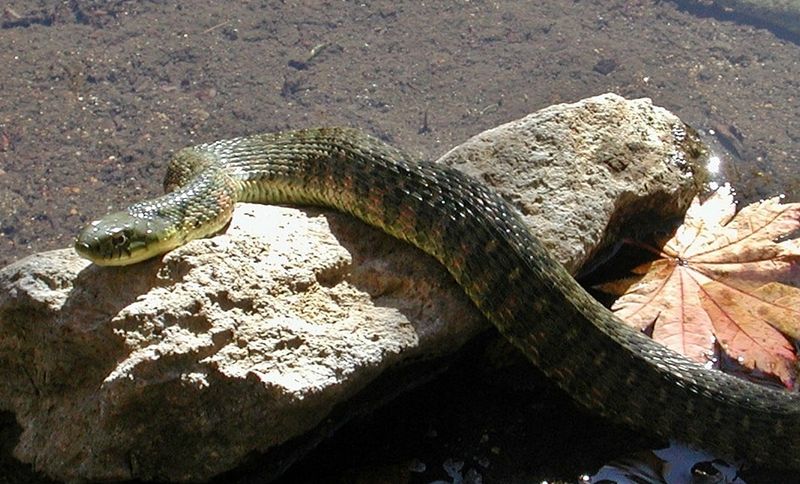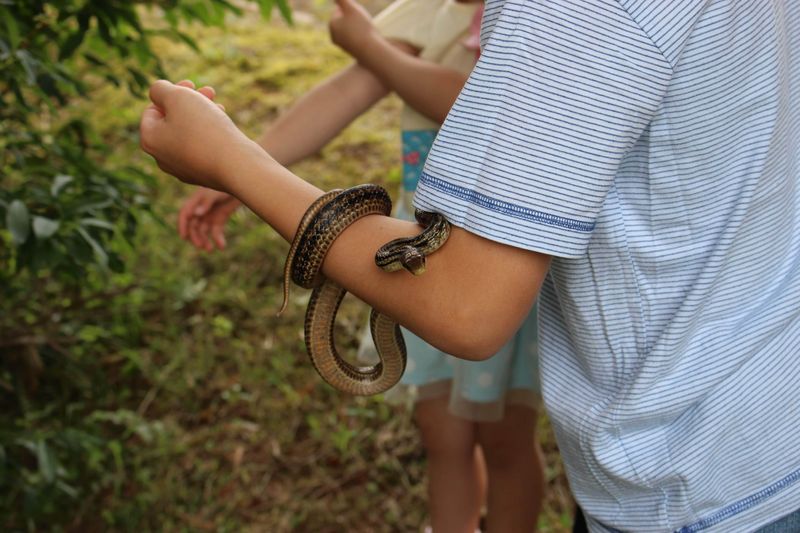Jun 21, 2019
How to know if a snake is dangerous in Japan
There are three types of venomous snakes in Japan. Mamushi, Yamakagashi and Habu. The latter, Habu, is only found on Okinawa. Yamakagashi is found on mainland Japan and most of the islands except for Hokkaido. And mamushi are found throughout Japan.
There are other varieties of snakes that can be found in Japan, but the above three are the only ones that are venomous. And of those, only the Habu and Mamushi are deadly. Deaths by Yamakagashi is extremely rare. Actually death by snake in Japan is not a common occurrence at all. There are only a handful of deaths reported annually, and of those the vast majority are caused when a person has tried to handle a deadly snake.
However, while death by snake is rare, the number of recorded snake bites per year is relatively high. On average around 2,000 people get bit by a mamushi each year. But the reason only a very small percentage of those bites are fatal is because anitvenom is easy to come by. You can get an emergency dose of antivenom in a koban, Police box, if you can't get to a hospital right away.
The Habu is even more aggressive, with more per capita bites recorded per year than the mamushi. But the Habu bite is not as dangerous as that of the Mamushi. The Yamakagashi, on the other hand, are much more shy and rarely bite. And even when they do, they rarely poison you as their fangs are at the back of the mouth and don't come in contact with your skin. Unless for some stupid reason you put your finger in their mouth! Which would be curtains for you, for - as far as they can tell - the yamakagshi's toxin is the most potent of all.
How to know if you have encountered your garden variety friendly snake or something a bit more threatening?
Arrow Head
Both the mamushi and the habu have what I call arrow heads. I remember hearing years ago you'll know if a snake is dangerous if it has a triangle face. That was very misleading, because a lot of snakes have triangle faces. And its not that the face of the mamushi or the habu is a triangle shape. Its actually their whole head. The face comes off the body like an arrow head.
Mamushi
Mamushi are nocturnal so sightings during the day are rare, unless you've managed to inadvertently disturb their resting place. They have brown circles that are darker on the circumference and then rimmed with a sort of light grey colour. They are not particularly long, usually about 120 centimetres.
Habu
There are two type of Habu. The Himehabu has random blotches of dark coloured circles on their olive green or brown coloured body. The Okinawan Habu has black blotches on a yellow body. The habu is the longest of three poisonous snakes. They are often around 150 to 155 centimeters long.
Yamakagashi

Image copyright Komeccho
The Yamakagashi does not have an arrow head, but it has a distinctive look which makes it easier to identify. They are generally about 90 centimeters long. Its base colour is olive green, which you can see around its face, with black and orange blotches all over its body. Its actually quite a beautiful snake, well for me who is quite taken with them anyway!
Behaviour
If a snake stands up they are about to attack. They say you should back away slowly but efficiently and get as far away as possible. If you make sudden movements or dash, they might lurch at you.

Hissing or opening its mouth as if they are going to hiss. They might be getting ready to stick their fangs in you. Even if a snake is not venomous the bite is very sore. And it will draw blood and might even cause some local swelling.
Behaviour is not the best indicator, because a lot of non venomous snakes mimic the behaviour of venomous snakes as a way to protect themselves. Apart from hissing, they hood, rattle and strike as a way of defending themselves against a possible attack. For the record, they play dead too.
No matter what, if a snake is doing anything threatening its always wise to put some distance between you and it! Especially if you don't know whether it is venomous or not. Have you encountered any snakes in Japan yet?
Former nickname was "Saitama". Changed it to save confusion on place review posts! Irish, 20+ years in Japan! I also write on my personal website: insaitama.com



4 Comments
genkidesu
on Jun 22
We see lots around here! Our neighbors have told us they're not venomous, but the Australian in me is internally programmed to freak out at the sight of any snake. This was a helpful guide!
TonetoEdo
on Jun 22
This is so helpful! We’ve got a lot of wildlife, Including aodaisho, blue generals. They’re not dangerous and are beneficial because they eat garden pests. Link to a photo of the non dangerous aodaisho - https://commons.m.wikimedia.org/wiki/File:Elaphe_climacophora_-Kyoto,_Japan-8.jpg#mw-jump-to-license It’s important to know the good guys from the bad guys.
BigfamJapan
on Jun 23
@genkidesu thanks a million K. I think its probably safer to freak out at the sight of them than to try and get close to determine which type they are! I actually like snakes, but in a controlled environment. I don't like meeting them on my walks!
BigfamJapan
on Jun 23
@TonetoEdo thank you :-) We have both poisonous and harmful snakes in our neighbourhood, but it is rare to see them. Although last year we had one living in our garden for a while. We reckon it was a mamushi because you rarely saw it during the day and when you did you'd only catch a glimpse, but we'd hear it at night. There are a lot of frogs around here, it attracts them.